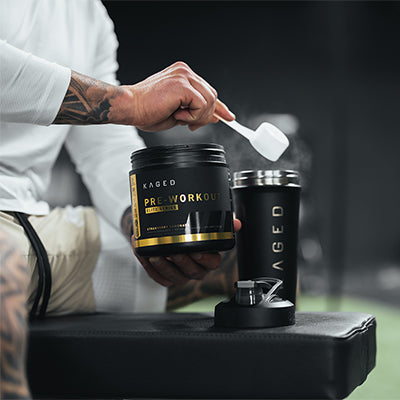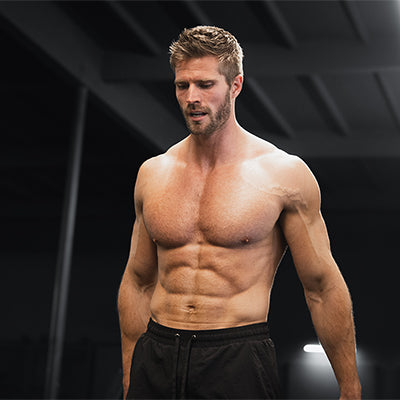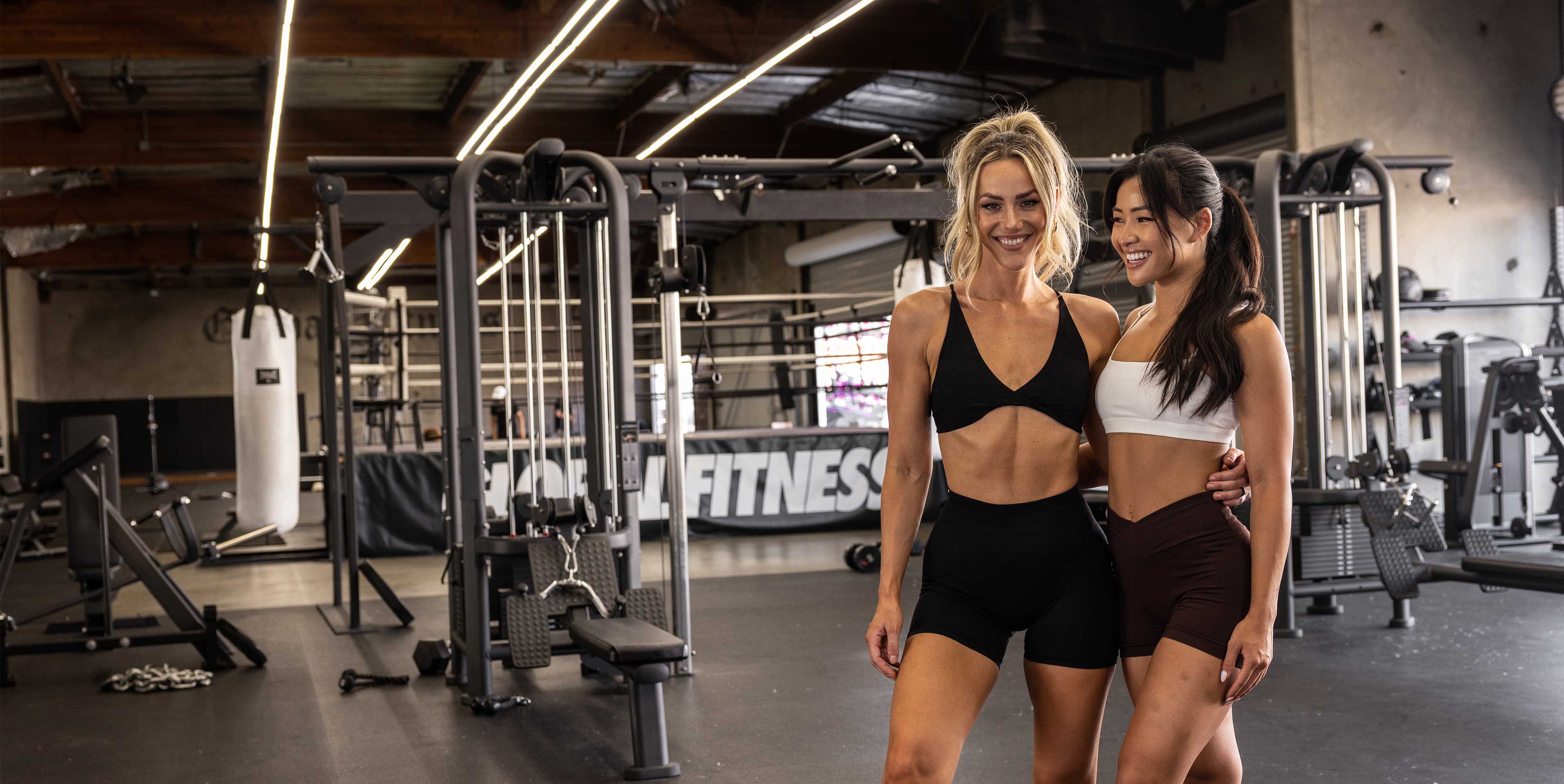If you want to get results in the gym, or in anything, consistency is a prerequisite.
As the saying goes, we tend to overestimate what we can do in a year, and underestimate what we can do in ten years.
In the realm of working out, the same is true on a smaller scale. We want results in four weeks, but what we really need to do is stick with our plan for months and years. In the gym we tend to overestimate what we can do in a month, and underestimate what we can do in a year.
However, we’ll only surprise our initial expectations and look back with pride if we first stay consistent.
In many respects, the “best” workout program is the one that you do. Whether your goal is weight loss, muscle gain, improving performance, or just to feel better, the simple fact is you won’t get there without consistency.
Further, we also know that movement and exercise is one of the critical factors for nearly all layers of health, from supporting longevity and healthspan to supporting mental health. Maintaining a consistent workout routine will transcend beyond how you look and how you perform in the gym. Its health benefits, research continues to show, can’t be overstated.
So how can you stay consistent with your workouts?
The solutions will vary from person to person. Consider this list of 12 proven strategies as an à la carte menu from which you can choose. Some of these may work hand-in-hand, while for others you’ll have to make a choice. It's also possible to start with simple strategies before graduating to more complex ones.
1) Get a Training Partner
Accountability is one of the most effective ways to stay consistent with your training. The impacts of accountability have been studied at length, whether in piano lessons or gym sessions.1 The outcome of these studies consistently shows: we’re more likely to follow through and stick to our plans when there are other people around keeping us accountable.
After all, if you know somebody is waiting for you at the gym, you're less likely to skip sessions, even when you're tired, sore, or not in the mood. We are social creatures, and often hate letting other people down more than ourselves.
Find a friend or somebody else who wants to stay consistent with their training, and keep each other accountable.
2) Hire a Trainer
If a training partner isn’t enough, hiring a trainer can add even more incentive. After all, now you have financial skin in the game to show up to the gym.
In addition, a good trainer will create a program tailored for you, with the right volume, frequency, and exercise selection that will set you up for success. The more personalized the training program, in general the better.
This also means if you fall off the training program, you have somebody there whose job is to make sure you get back on.
Level 1: Hire an online personal trainer
Online personal training often won’t cost as much as seeing an in-person trainer on a regular basis.
These most often have a monthly rate, so it’s a monthly financial commitment to your goals.
The downside is you’ll have less direct coaching, and there won’t be somebody waiting for you a certain hour to be at the gym.
Level 2: Hire an in-person trainer
If you have the financial means, probably the best way to make sure you stay consistent is to hire a trainer 2-3x per week at your gym.
3) Give Your Friend Money If You Fail
Potential loss is often a better motivator than potential reward. In The 4-Hour Body, Tim Ferriss discusses various strategies for failure-proofing your goals. One of them is to give your friend money, whether $1 or $1000, if you miss a gym session. We’re highly motivated by potential loss, and this will help you get to the gym even on the days when you don’t want to.
Ferriss says, “It’s not the $1 that matters, it’s the underlying psychology.”
As a less extreme version of accountability, you could post on social media when you’re planning on going, and make it a point to put it on your Story when you get the workout done.
4) Get a Program
Often what keeps people from staying consistent with their workouts is that they lack a workout plan.
Maybe you have a gym membership, and a rough idea of what you think you should do, but without a program, you have no real idea of what you should do or when you should do it.
One of the paradoxes of this is that the specific program might not even matter. As we’ve already said, the best program is the one that you do.
If you’re looking for a program, check out our selection of free training programs for any goal.
5) Start with a 2-3 Day/Week Program
One of the common mistakes people make when establishing an exercise routine, is they do too much too soon. This leads to soreness, fatigue, and a general shake-up in one’s life, all of which contribute to abandoning the program altogether.
Legendary strength and conditioning coach Mike Boyle often discusses on the Strength Coach Podcast how adults and young athletes can get results from as little as twice a week, as long they’re consistent.2
Starting a training program and going to the gym will likely disrupt some aspects of your life and habits. There’s no rush, race, or reason to train five times per week if you’re a beginner. Instead, start with twice a week. Over the months, then you can taper up to three or four times a week.
This also helps make sure your workout schedule fits in with your life schedule. You’ll also get the rest days you need. When you start training, you’re likely to be sore and fatigued, and need extra time to recover.
6) Keep the Workouts Short
Relatedly, we have built workouts in our culture around the concept of hours. However, remember that 60 minutes is totally arbitrary, and there are lots of benefits to working out for 45, 30, or even 15 minutes.
Start with what works for you and build up from there. Make your quota at first to just show up. Over the months, you can build up your volume.
7) Choose a Training Style You’re Excited About
Finally, make sure you choose a training style you’re excited about. Are you interested in bodybuilding because you like the slow-tempo training and the pump you feel in your arms? Awesome. Do you prefer cardio-centric training? Great. Can you only do bodyweight training because you don’t have a gym? Start there. Would a yoga class be the lowest barrier to entry to stay consistent with exercise? Do that.
Relatedly, just because a style of training is effective doesn’t mean you should do it. High-intensity interval training (HIIT), while undoubtedly effective, can be miserable. If this makes you dread going to the gym, don’t do it. It’s okay to work up to it.
First, choose what makes you most excited.
Down the line, once you’ve established a fitness routine and built the habit, that’s when it’s time to venture into other areas. If you’re a gym rat, you would likely benefit from yoga. If all you do is run, some strength training could go a long way.
8) Take a Pre-Workout
Yes, we are a supplements company that makes some incredible, researched-backed pre-workouts. We believe that a pre-workout should support your energy, focus, stamina, and more. However, none of these might be the most valuable benefit.

If you buy a pre-workout, you’re going to use it. When you take pre-workout, you’re going to the gym.
This alone, even if it were a complete placebo, can make a pre-workout supplement a great investment in yourself. If it pushes you to go to the gym consistently, it’s worth it.
When you’re considering adding a supplement to your routine, remember it doesn’t exist in a vacuum. It’s not just about the ingredients.
That said, if you’re gonna take a pre-workout, take one that helps you train with clearer mental focus, improved muscle pumps, more power, and better stamina. This is where Pre-Kaged can come in. If you’re a beginner, we recommend Pre-Kaged Sport because it has fewer stimulants and ingredients overall.
9) Workout at a Consistent Time of Day
A common question beginners ask is “what’s the best time to workout?” Sure, physiologically speaking, the morning time is when we typically have the highest levels of sympathetic hormones, and are therefore primed for peak performance. However, the real answer is the best time that works for you.
Maybe you’ll need to plan it first thing in the morning, because once your day gets going, you know the time will slip from you.Maybe you work from home and a lunchtime workout can break up a monotonous work day. Maybe you need to go immediately after work.
Practically speaking, just choose a time, and then block that time off. Guard it from meetings and appointments. If a coworker wants to grab a coffee after work, tell them they need to wait until 6:30 so you can get your workout in.
10) Tap Into the Power of Habit Stacking
In Atomic Habits, James Clear introduces a concept called “Habit Stacking.”
Clear writes, “You probably have very strong habits and connections that you take for granted each day…You can take advantage of these strong connections to build new habits.”
He continues, “One of the best ways to build a new habit is to identify a current habit you already do each day and then stack your new behavior on top.”
To stay consistent with your workouts, think about what habit you can pair your training with. To steal an example from Clear, maybe after you take off your work shoes, you put on your workout clothes.
Maybe before you brew your morning cup of coffee, you will take a scoop of Pre-Kaged.
Regardless, think about how you can use your current habits and daily routine to reduce the resistance to forming new ones.
11) Have Your Gym Bag and Gym Clothes Ready
Included in this tip, think about any other small steps you can take to lower the steps you need to take to make it to the gym.
Our willpower wanes. This is a fact. Instead of always relying on willpower, it’s more effective to lower the amount of willpower we need. Maybe one minute you’re motivated to train, but because you have to pack your gym bag, spend four minutes looking for a gym shirt, and find your gym shoes.
In that time, a notification popped up on your phone, or you got hit with a wave of lethargy, and lost the momentum you needed to make it to the gym.
12) Set Behavior-Based Goals
Goal-setting can be a great tool. However, often with working out, people set outcome-based goals rather than behavior-based goals.
An example of an outcome based goal is “lose ten pounds.” A behavior-based goal is “go to the gym three days per week for eight weeks.”
The latter is fully within your control, so you can celebrate wins and keep the momentum going. The former has a ton of factors, and often you won’t reach these outcome goals as quickly as you’d like.
Or, you’ll resort to extreme measures in order to do so, but then you won’t be able to sustain the change. This is one reason why people put weight back on after losing it.
Relatedly, plateaus are inevitable. Just because you stay consistent, doesn’t mean the progress will come in a linear fashion. In fact, it won’t. It never does.
Once You’re Consistent, Then You Can Go Beyond
In Discipline is Destiny, Ryan Holiday discusses the dichotomy between feeling content with progress, yet never being satisfied. He writes, “It’s a beautiful irony. You are never content with your progress and yet you are always content, because you are making progress.”
At Kaged, our training philosophy is to live in this dichotomy. We celebrate success, progress, and small steps, while never settling. We hope that once you stick to your program, you want to go beyond, to see how training can improve so many areas of your life, and how it will only be the first step in your evolution.
However, the first step is to take the first step.
Kaged Supplements: A Part of Your Journey
Supplements will not do the work for you. They are not magic pills, nothing is. They are here to support you on your journey, to help give you the extra edge, motivation, and accountability that could be the difference between hitting the gym and skipping it, between getting 8 reps and 10.
That’s where Kaged comes in.
To learn more about our pre-workouts and their different uses, check out our article on The 4 Types of Pre-Kaged.





























